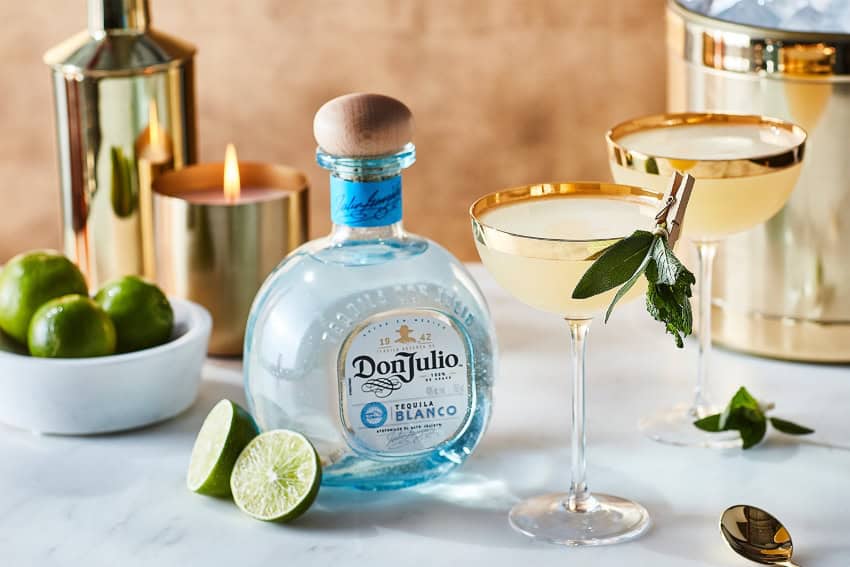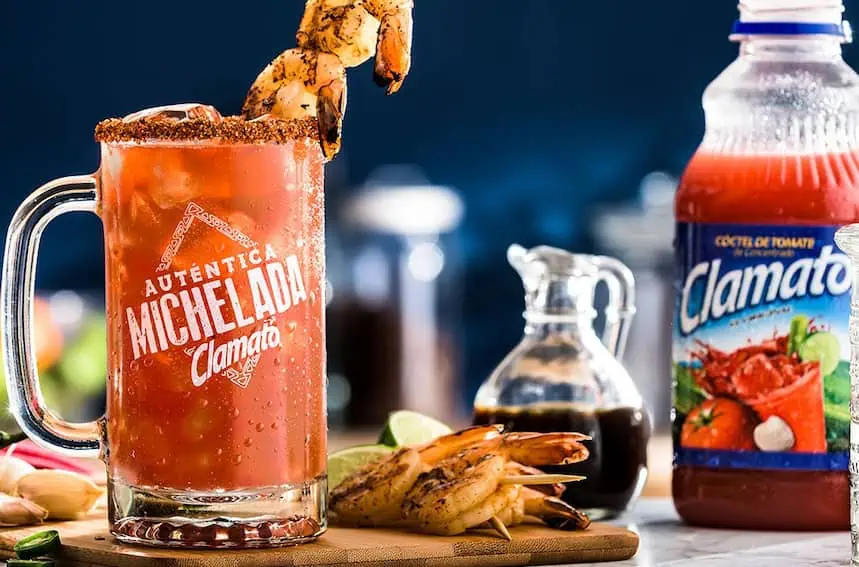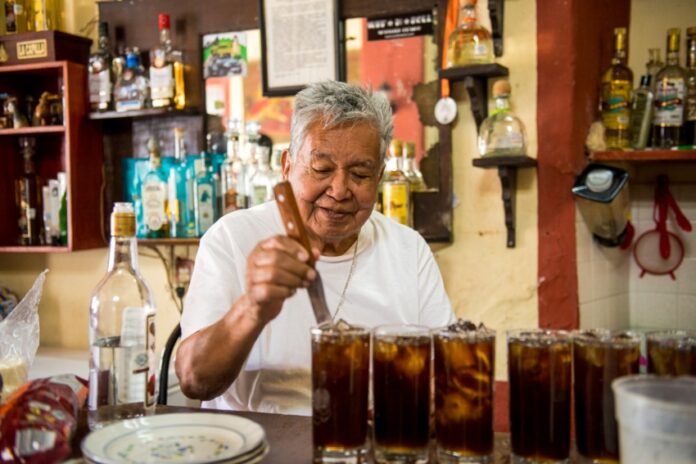The first cocktail recipe created in Mexico that we know about is remembered because of a tourist named Charles H. Baker, and that’s only because he wrote about his experience with the Mexican Firing Squad Special in his book “The Gentleman’s Companion.” It was published in 1939, two years after he was introduced to the potent blend of tequila, lime juice, grenadine and Angostura bitters in a Mexico City cantina called La Cucaracha.
Of course, cantinas had been around for almost 100 years in Mexico by the time Baker’s book appeared, and tequila and mezcal far longer, so there’s little doubt that cocktails had been served well before Baker went barhopping. What’s undoubtedly true, though, is that the 1930s were the decade that witnessed the creation of the first of Mexico’s most iconic cocktails, the margarita, and saw the launch of a liqueur that would be added to many more in the years to come.
The Margarita

Despite the many colorful and disputed stories about its creation, the margarita almost assuredly evolved from a classic cocktail called the daisy, which could be made with any number of base liquors, from brandy to tequila. We know, for example, that the tequila daisy was being served in Tijuana by 1936. Yes, another tourist wrote about it, this one in Iowa’s The Moville Mail.
Because the daisy’s name in Spanish is margarita, and because this cocktail fixture’s original ingredients included an orange cordial, it’s easy to see how the fusing of tequila with Controy (or Cointreau, or Triple Sec) began. This evolution, which included squeezing lime juice instead of lemon, is increasingly accepted as the true origin of the margarita, with Tijuana, a hotspot for cross-border boozers during Prohibition, the likeliest birthplace.
However, that didn’t stop a slew of other origin stories, most of which were also set in Baja California. The most famous of these involved a bar owner named Danny Herrera, who reportedly created the margarita for a showgirl named Marjorie King who was allergic to every liquor except tequila. The Los Angeles Times blessed Herrera as the inventor of the margarita when he died in 1992 at the age of 90, even though, as noted, he probably wasn’t.
The Paloma

“La Paloma” (The Dove), written by Basque composer Sebastián Iradier circa 1863, is one of the most popular songs ever written, having been covered hundreds, if not thousands, of times. It’s particularly popular in Mexico. So it makes sense that one of the country’s most iconic cocktails, and a great summertime sipper, was created in a cantina where the song was being played.
Most cocktail historians cite Mexico City, the center of cantina culture, as the birthplace of the paloma, and the 1950s as the decade when its creation probably occurred. This, not coincidentally, was when Squirt grapefruit-flavored soda was introduced to Mexico. Yes, grapefruit soda is one of the cocktail’s signature ingredients — along with tequila, lime juice and salt — although grapefruit juice and soda water can be blended in a pinch.
For years, the recipe was credited to Don Javier Delgado Corona, the long-time owner of La Capilla cantina in Tequila, Jalisco. Don Javier did invent the batanga (tequila, cola, lime juice and salt), another of Mexico’s great cocktails, but he denied having anything to do with the paloma, so we’ll take him at his word. He passed away in 2020 at age 96, but his legendary bar is still open.
The Michelada

It’s hard to dispute the invention of Mexico’s ultimate beer cocktail. That’s because one can’t say michelada without mentioning its creator, Michel Ésper, whose penchant for ordering his beers with lime, salt and ice at Club Deportivo Potosino in San Luis Potosí in the 1970s quickly caught on, leading others to add their own favorite ingredients, like clamato, tamarind, tajín or salsa inglesa (aka Worcestershire sauce).
Hard to dispute, but not impossible. After all, the phrase mi chela helada (my cold beer) turns into michelada pretty easily when you say it fast, and lime and salt tend to get added to nearly every cocktail in Mexico. So it seems well within the bounds of possibility that, like Danny Herrera, Michel Ésper benefited from a mythology that sprang up around a popular new drink.
Whatever the case, few cocktails in Mexico have proven as enduring, or have inspired as many satisfying variations.
The Vampiro
View this post on Instagram
Mexico’s answer to the Bloody Mary should not be confused with the non-alcoholic version served in a thousand juice bars. The latter features beet, carrot and orange juice, while nothing quite so healthy is found in the more potent recipe attributed to Oscar Hernández, although according to legend, he did invent his now iconic cocktail at a juice stand.
“It looks like you’re sucking up blood when you drink one, so I decided to call them vampiros,” he recalled to Vice, remembering how he had mixed tequila, sangrita, grapefruit soda, and salt to stay cool during hot summer days in San Luis Soyatlán, which borders Lake Chapala in Jalisco, during the late 1970s.
When customers were initially asked to try the cocktail, he gave them away for free. However, once they proved popular, he began selling them, first in cups and later in plastic bags. Over time, the more bloody Mary-like tomato juice has become an acceptable substitute for sangrita, which in Jalisco, where it was invented by José Edmundo and Guadalupe Sánchez, is typically a blend of Seville orange, lime and pomegranate juices with powdered chile. But the original is better.
The Cucaracha
@miverapaz shot de cucarachas #shot #shotcucaracha #fuego #kalua #tequila #jueves #ahumados #juevesdeahumados #miverapaz #zona1 #gt #ribeye #parrilla #receta #ribeyeconhueso #CapCut
As far as iconic status goes, the charro negro, a version of the Cuba libre using tequila instead of rum, is likely ordered far more commonly than the cucaracha. But the not-so-tasty-sounding “cockroach” is among the best cocktails invented in Mexico that include Kahlua, an ingredient that has to be mentioned in any serious look at the country’s cocktail culture.
Launched by Pedro Domecq in Veracruz in 1936, and featuring a flavorful blend of rum and coffee, Kahlua has since become a cocktail staple poured thousands of times daily around the world into white Russians, black Russians, mudslides, espresso martinis, and more. In Mexico, though, it reaches its zenith as a pairing partner for tequila in the fiery cucaracha.
Like the paloma, the cucaracha gets its name from a famous song — in this case, La Cucaracha. However, the cocktail’s history is less well known than that of the song, which is associated with the Mexican Revolution.
Chris Sands is the Cabo San Lucas local expert for the USA Today travel website 10 Best, writer of Fodor’s Los Cabos travel guidebook and a contributor to numerous websites and publications, including Tasting Table, Marriott Bonvoy Traveler, Forbes Travel Guide, Porthole Cruise, Cabo Living and Mexico News Daily.
